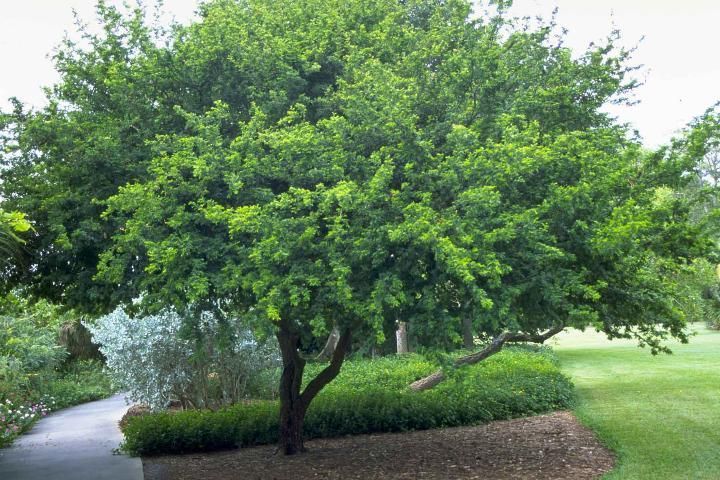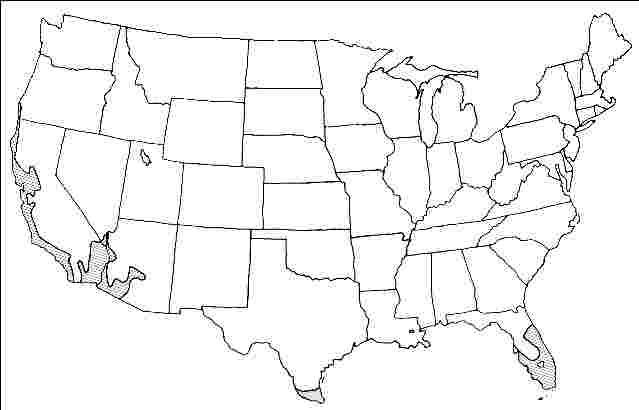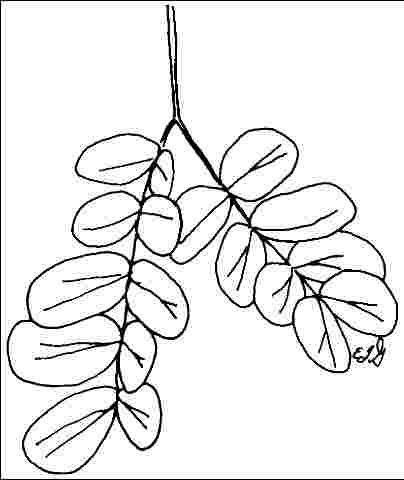Introduction
This 15- to 30-foot-tall evergreen tree is native to Texas and Mexico and is ideal for use in dry, desert landscapes. The short branches are clothed in very small, dark green leaflets and make up a 15- to 20-foot-wide rounded canopy which casts medium shade below. Short thorns are interspersed among the branches. From June to August, Texas ebony is decorated with dense, plume-like spikes of very fragrant, light yellow to white blossoms. The dark brown to black, woody seed capsules which follow are four to six inches long and persist on the tree. In Mexico, the seeds from these pods are eaten, and the black woody shells have been known to be roasted as a coffee substitute in times past. The attractive, short trunk of Texas ebony is covered with smooth, grey bark. It makes a nice medium-sized shade tree.

Credit: Ed Gilman, UF/IFAS
General Information
Scientific name: Ebenopsis ebano
Pronunciation: eh-behn-OP-sis eh-BAN-oo
Common name(s): Black-bead ebony, Texas ebony
Family: Fabaceae
USDA hardiness zones: 9B through 11 (Figure 2)
Origin: native to North America
Invasive potential: not assessed/incomplete assessment
Uses: parking lot island < 100 sq ft; parking lot island 100–200 sq ft; parking lot island > 200 sq ft; highway median; reclamation; shade; specimen; container or planter

Credit: UF/IFAS
Description
Height: 20 to 30 feet
Spread: 20 to 30 feet
Crown uniformity: irregular
Crown shape: spreading, vase, round
Crown density: moderate
Growth rate: moderate
Texture: fine
Foliage
Leaf arrangement: alternate (Figure 3)
Leaf type: bipinnately compound, even-pinnately compound
Leaf margin: entire
Leaf shape: elliptic (oval), obovate
Leaf venation: pinnate
Leaf type and persistence: evergreen
Leaf blade length: less than 2 inches
Leaf color: green
Fall color: no color change
Fall characteristic: not showy

Credit: UF/IFAS
Flower
Flower color: yellow, white/cream/gray
Flower characteristics: showy
Fruit
Fruit shape: elongated, pod or pod-like
Fruit length: 3 to 6 inches
Fruit covering: dry or hard
Fruit color: brown, black
Fruit characteristics: does not attract wildlife; showy; fruit/leaves not a litter problem
Trunk and Branches
Trunk/bark/branches: branches droop; showy; typically multi-trunked; no thorns
Pruning requirement: needed for strong structure
Breakage: resistant
Current year twig color: green, brown
Current year twig thickness: thick, very thick
Wood specific gravity: unknown
Culture
Light requirement: full sun
Soil tolerances: clay; sand; loam; alkaline; acidic; well-drained
Drought tolerance: high
Aerosol salt tolerance: moderate
Other
Roots: not a problem
Winter interest: no
Outstanding tree: yes
Ozone sensitivity: unknown
Verticillium wilt susceptibility: unknown
Pest resistance: free of serious pests and diseases
Use and Management
Preferring well-drained, alkaline soils, Texas ebony will thrive in full sun with little water once established. Trees are tolerant of wind and compacted soil, helping to make them a popular choice for arid landscapes.
Propagation is by seed.
Pests and Diseases
No pests or diseases are of major concern. Be careful not to over-irrigate.